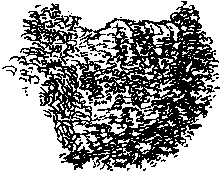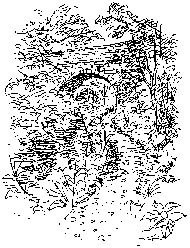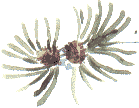Nature Diary Rocks History Gallery Links Home Page   THERE ARE Bullfinches and Chaffinches in the hedges along the lane near the entrance to Anglers Country Park at Wintersett south east of Wakefield.
THERE ARE Bullfinches and Chaffinches in the hedges along the lane near the entrance to Anglers Country Park at Wintersett south east of Wakefield.
Norman Moore, who knew the naturalist, tells us that, between 1821 and 1826, Waterton 'fenced the park with a wall eight feet high. This fortification cost him £9,000 which, he used jocularly to say, he had saved from the wine he did not drink.' The weathered sandstone supports a luxurious growth of ivy, the flowers of which attract the last hoverflies of autumn. One or two gaping holes in the wall have recently been repaired, but I'm glad to see that a large drain pipe has been set into it, near the ground, to allow animals access.
'I recalled to my mind', writes Waterton, 'the incessant and horrible curses which our village urchins vent against their hauling horses on the banks of the Barnsley canal. This aqueous line of commerce passes close by my porterís lodges; and as the first lock is only a short distance from them, the horrid din of curses commences there, As they passed the park, bargees would take pot-shots at the pheasants. Waterton fixed wooden pheasant decoys in the trees to confuse them.
Waterton's Park, Richard Bell, 1998
Thinning is also underway in the adjoining Beech plantation.
 The wind whips up waves on Wintersett reservoir.
|
 There's quite a wind blowing, so we head for the shelter of Haw Park, following the lane alongside the longest surviving stretch of the wall built by naturalist Charles Waterton to protect his wildlife sanctuary, the adjoining Walton Park.
There's quite a wind blowing, so we head for the shelter of Haw Park, following the lane alongside the longest surviving stretch of the wall built by naturalist Charles Waterton to protect his wildlife sanctuary, the adjoining Walton Park. We return alongside the Barnsley Canal.
We return alongside the Barnsley Canal. and is kept up by these young devils incarnate from week to week (Sundays not excepted) with the most perfect impunity.'
and is kept up by these young devils incarnate from week to week (Sundays not excepted) with the most perfect impunity.' Like
Like